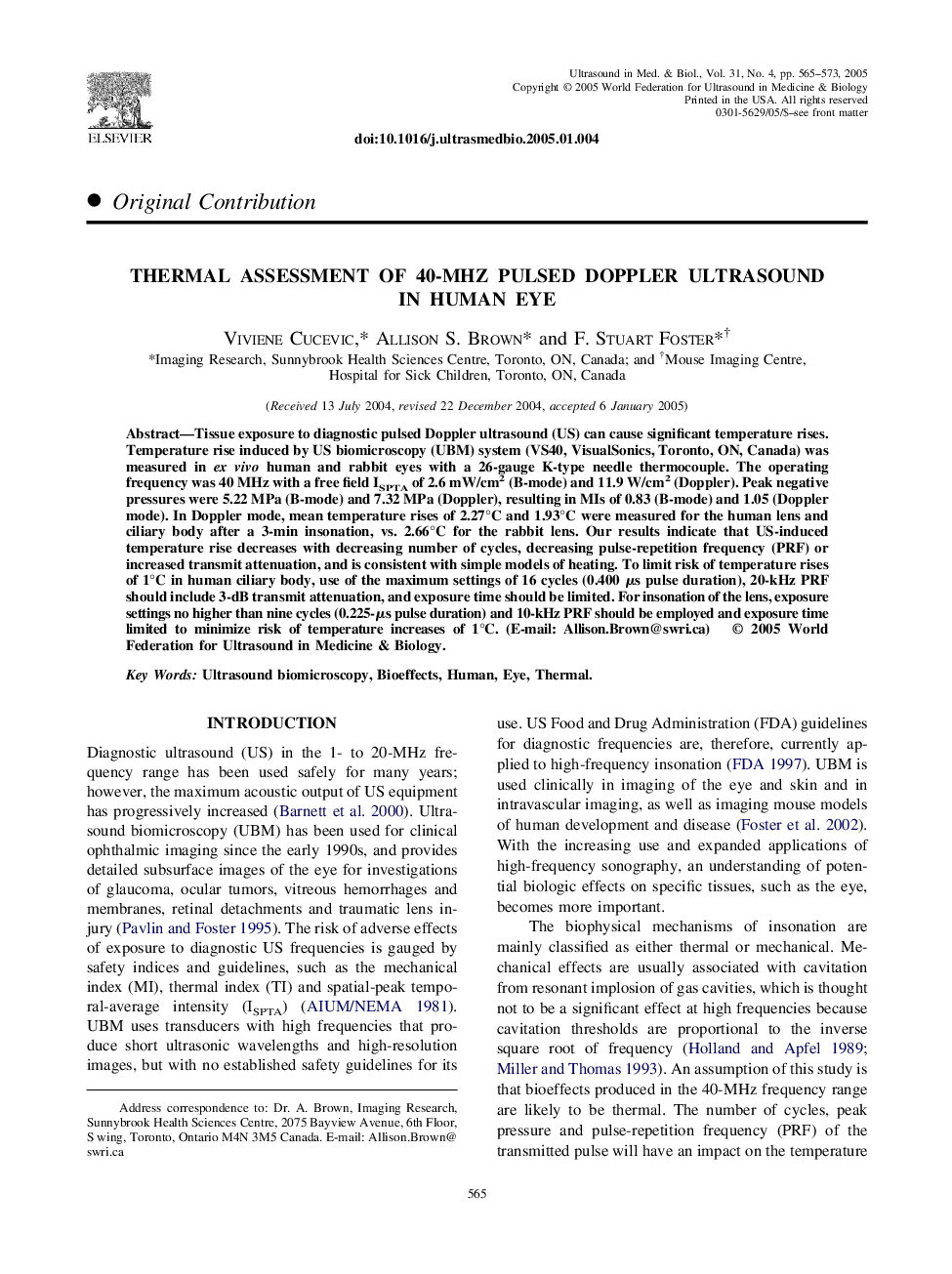| کد مقاله | کد نشریه | سال انتشار | مقاله انگلیسی | نسخه تمام متن |
|---|---|---|---|---|
| 10692815 | 1019742 | 2005 | 9 صفحه PDF | دانلود رایگان |
عنوان انگلیسی مقاله ISI
Thermal assessment of 40-MHz pulsed Doppler ultrasound in human eye
دانلود مقاله + سفارش ترجمه
دانلود مقاله ISI انگلیسی
رایگان برای ایرانیان
کلمات کلیدی
موضوعات مرتبط
مهندسی و علوم پایه
فیزیک و نجوم
آکوستیک و فرا صوت
پیش نمایش صفحه اول مقاله

چکیده انگلیسی
Tissue exposure to diagnostic pulsed Doppler ultrasound (US) can cause significant temperature rises. Temperature rise induced by US biomicroscopy (UBM) system (VS40, VisualSonics, Toronto, ON, Canada) was measured in ex vivo human and rabbit eyes with a 26-gauge K-type needle thermocouple. The operating frequency was 40 MHz with a free field ISPTA of 2.6 mW/cm2 (B-mode) and 11.9 W/cm2 (Doppler). Peak negative pressures were 5.22 MPa (B-mode) and 7.32 MPa (Doppler), resulting in MIs of 0.83 (B-mode) and 1.05 (Doppler mode). In Doppler mode, mean temperature rises of 2.27°C and 1.93°C were measured for the human lens and ciliary body after a 3-min insonation, vs. 2.66°C for the rabbit lens. Our results indicate that US-induced temperature rise decreases with decreasing number of cycles, decreasing pulse-repetition frequency (PRF) or increased transmit attenuation, and is consistent with simple models of heating. To limit risk of temperature rises of 1°C in human ciliary body, use of the maximum settings of 16 cycles (0.400 μs pulse duration), 20-kHz PRF should include 3-dB transmit attenuation, and exposure time should be limited. For insonation of the lens, exposure settings no higher than nine cycles (0.225-μs pulse duration) and 10-kHz PRF should be employed and exposure time limited to minimize risk of temperature increases of 1°C. (E-mail: Allison.Brown@swri.ca)
ناشر
Database: Elsevier - ScienceDirect (ساینس دایرکت)
Journal: Ultrasound in Medicine & Biology - Volume 31, Issue 4, April 2005, Pages 565-573
Journal: Ultrasound in Medicine & Biology - Volume 31, Issue 4, April 2005, Pages 565-573
نویسندگان
Viviene Cucevic, Allison S. Brown, F. Stuart Foster,